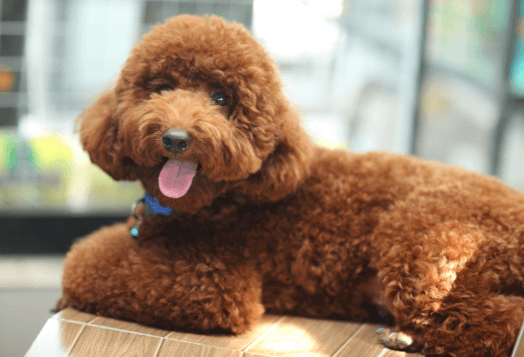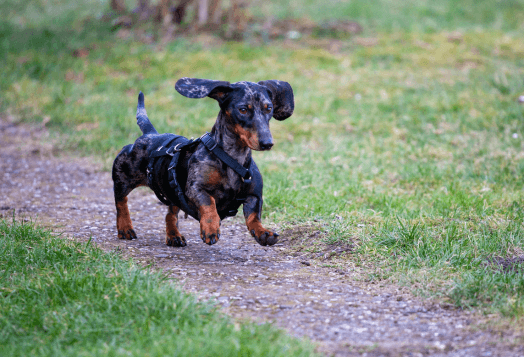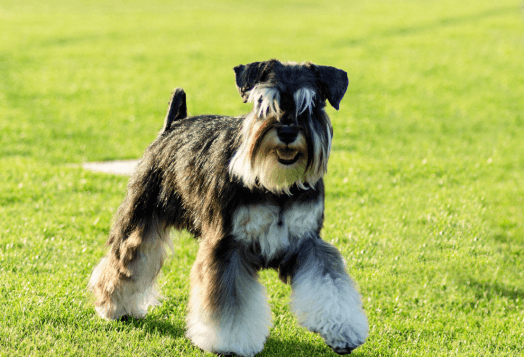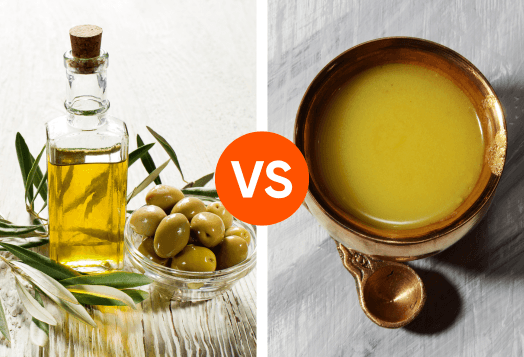If you’re a dog parent or planning to be one, you’ve probably asked the big question:
‘How long will my dog be with me?’
We wish our furry friends could stay forever, but the truth is, some breeds live longer than others. The good news? You can choose a breed known for its long lifespan, and you can take steps to help them live even longer.
Whether you're adopting or just curious, here’s what you need to know.
How Long Do Dogs Live? What Every Dog Parent Should Know
Getting a dog means gaining a loyal family member, and naturally, you want them around for as long as possible.
The average life expectancy of a dog is 10 to 13 years, but that depends on breed, size, health, and daily care. Smaller dogs that live long may reach up to 20 years, while larger dogs tend to have shorter lives.
Understanding what affects your dog’s lifespan helps you plan for a longer, healthier journey together and appreciate the life cycle of a dog at each stage.
What Affects a Dog’s Lifespan?
Size plays a big role
Smaller dogs like Chihuahuas and Shih Tzus often live longer, some even reaching 15 to 20 years. In contrast, larger breeds like Great Danes or Bernese Mountain Dogs tend to have shorter lifespans.
Breed and genetics matter
Some breeds are genetically predisposed to specific health conditions, while others are naturally more resilient. Knowing your dog’s breed traits helps you prepare for potential risks early on.
Daily care makes all the difference
A nutritious diet, regular vet visits, mental stimulation, and daily exercise can significantly improve your dog’s quality of life and longevity.
Tip: Smaller dogs can live up to 15–20 years with the proper care, making them some of the longest-living dog breeds around.
Understanding what influences a dog's life cycle can help you provide the best possible care and more precious years together. Longest-Living Dog Breeds (and How to Keep Them Around Longer)
Thinking of long-term companionship? These dog breeds are known for their impressive lifespans, and each one brings something special to the table or couch.
1. Chihuahua – The Tiny Boss (Lives 14–18 Years)

Small dog, big attitude. Chihuahuas may only weigh a few pounds, but they act like they run the house, and honestly, they usually do. Despite their size, they’re surprisingly long-lived, often outlasting many larger breeds. These confident little characters bring big energy, loyalty, and sass to any home.
Care Tips:
Handle with care; they’re delicate and light-boned.
Dental hygiene is essential, and brushing should be part of their routine.
Offer warm bedding; they’re sensitive to colder temperatures.
Early training helps manage their bold temperament.
2. Toy Poodle – Intelligent and Elegant (Lifespan: 14–17 Years)

The Toy Poodle combines charm with intelligence. This breed learns quickly, enjoys challenges, and thrives in an environment where mental stimulation is a daily part of life. Their elegant appearance is matched by a lively and affectionate nature.
Care Tips:
Professional grooming is necessary to maintain their coat.
Mental enrichment through games and training is key.
Stay mindful of joint health as they age.
Keep their eyes clean to prevent irritation.
3. Dachshund – Brave and Curious (Lifespan: 12–16 Years)

Dachshunds may look charming with their long bodies and short legs, but they were originally bred to chase and flush out animals like badgers from underground tunnels. That hunting instinct still runs deep; they love to explore, dig, and follow scents with laser focus. These little adventurers are bold, intelligent, and surprisingly fearless for their size.
Care Tips:
Prevent jumping from high surfaces to protect their spine.
Monitor their weight closely, as excess weight can lead to back issues.s
Use a harness for walks to reduce neck strain.
Offer daily opportunities for mental stimulation.
4. Shih Tzu – Regal and Affectionate (Lifespan: 10–16 Years)

Bred for Chinese royalty, Shih Tzus haven’t forgotten their noble roots. They’re happiest lounging in your lap or being pampered. They enjoy calm environments and form deep bonds with their families, making them excellent house pets.
Care Tips:
Their coat requires daily brushing or regular trims.
Clean their eyes and facial folds frequently.
Gentle walks suit their moderate activity needs.
Regular ear care helps prevent infections.
5. Maltese – The Fluffy Charmer (Lives 12–15 Years)

The Maltese may appear dainty, but this breed is spirited and lively. Their loving nature and affectionate temperament make them wonderful companions, particularly for those looking for a close bond with their pet.
Care Tips:
Their long coat needs frequent grooming or clipping.
Prioritise dental care; this breed is prone to tooth issues.
Offer a soft resting space, and they enjoy comfort.
Early socialisation reduces separation anxiety.
6. Beagle – Energetic and Friendly (Lifespan: 12–15 Years)

Beagles are full of enthusiasm and curiosity. They’re highly social and do best in homes where they have company and space to explore. Their excellent sense of smell often leads them to follow their noses before anything else.
Care Tips:
Secure outdoor spaces, they’re known escape artists.
Daily exercise is essential to keep them fit.
Clean their ears weekly to avoid infections.
Puzzle toys are helpful for mental stimulation.
7. Lhasa Apso – Independent but Loyal (Lifespan: 12–15 Years)

Originally bred as monastery watchdogs, Lhasa Apsos are alert, independent, and self-assured. They’re not overly demanding but are intensely loyal to those they trust. With time and patience, they become affectionate companions.
Care Tips:
Consistent grooming keeps their coat manageable
Begin training early, and they can be strong-willed.
Monitor for eye and skin issues as they age.
Offer a calm environment, don’t like chaos.
8. Miniature Schnauzer – Lively and Intelligent (Lifespan: 12–15 Years)

Miniature Schnauzers bring energy and intelligence into every interaction. They are naturally curious, quick learners, and often develop strong connections with their human families. Their distinct appearance adds to their appeal.
Care Tips:
Their wiry coat needs regular professional grooming.
Daily walks and play are essential to managing energy.
Clean their beard regularly after meals.
Socialisation from a young age prevents territorial behaviour
9. Pomeranian – Confident and Expressive (Lifespan: 12–16 Years)

Pomeranians may be small, but they’re bold and expressive. Their luxurious coat and lively nature make them eye-catching companions. They thrive in homes where they can interact frequently with their owners.
Care Tips:
Brush their thick coat several times a week.
Use a harness for walks to protect their neck.
Keep up with dental care to prevent early tooth loss.
Provide mentally stimulating activities, as they get bored easily.
10. Labrador Retriever – Loyal, Playful, and Always Ready (Lifespan: 10–12 Years)

Labradors are the definition of a people dog, friendly, eager to please, and always up for a game of fetch. Originally bred to help fishermen retrieve nets and catch fish, they’ve held onto that hardworking, water-loving nature. Their gentle temperament and intelligence make them one of the most popular family dogs worldwide.
Care Tips:
Keep them mentally and physically engaged with daily walks and interactive games.
Introduce puzzle toys to prevent boredom; they love a challenge.
Monitor their diet carefully; Labs are prone to overeating and weight gain.
Encourage swimming when possible; it’s great for joints and overall fitness.
What Makes a Dog Live Longer?
There’s no magic formula, but a few key factors can make a big difference in your dog’s lifespan:
Size
Smaller dogs often outlive larger breeds. They age more slowly and are less prone to some serious health issues.
Genetics
Some breeds are naturally hardier. Mixed-breed dogs often have fewer inherited health problems thanks to a more diverse gene pool.
Diet
A balanced diet keeps their body strong and their immune system sharp, helping to prevent issues like a dog losing hair. Avoid overfeeding, as extra weight shortens lifespan.
Exercise
Daily activity keeps their heart, joints, and mind in shape. Walks, games, and training sessions are essential.
Vet Care
Regular checkups help catch issues early. Staying up to date on vaccines, dental care, and parasite control can add years to their lives.
Want to Keep Your Dog Around Longer? Start Here
A longer, healthier life for your dog isn’t complicated; it’s about consistency and care. Here’s what to focus on:
Don’t skip vet visits
Annual checkups help catch problems early. For older dogs or breeds prone to health issues, twice-yearly visits are even better. Early detection means better treatment options and fewer emergencies.
Feed smart
One size doesn’t fit all. Choose food that’s right for your dog’s age (puppy, adult, senior), size, and health condition. High-quality ingredients and proper portions support everything from energy levels to joint health.
Stay active together
Exercise keeps your dog’s body strong and mind sharp. Daily pet walking, fetch, agility games, or even indoor puzzle toys help prevent obesity and boredom-related behaviour problems.
Keep them clean
Pet grooming isn’t just for looks. Brushing removes loose fur and dirt, regular baths keep skin healthy, and ear cleaning prevents infections. Long-haired breeds especially benefit from a routine.
Use preventives
Heartworms, fleas, and ticks can seriously impact your dog’s health and lifespan. Monthly preventives protect them from parasites and the diseases they carry.
Because Every Year Together Counts
If you’re thinking long-term, choose a breed that’s known to live longer, and commit to giving them the best care every single day. Before you decide, it also helps to understand the life cycle of a dog, from energetic puppyhood to their golden senior years.
That way, you’re prepared for every stage of their journey. You won’t just be adding years to their life, you’ll be adding life to their years.
Because your dog deserves more than just time, they deserve a long, happy, healthy life filled with love, play, and everything in between.




